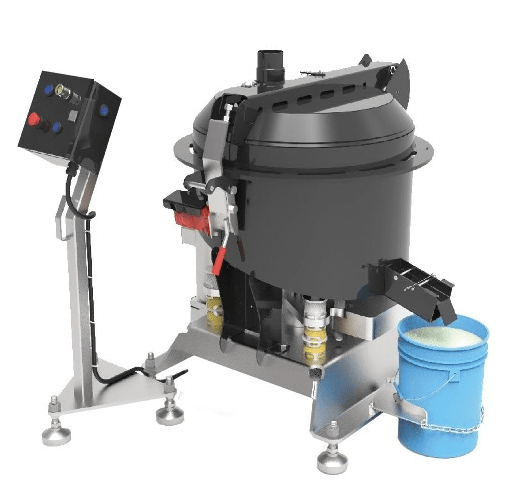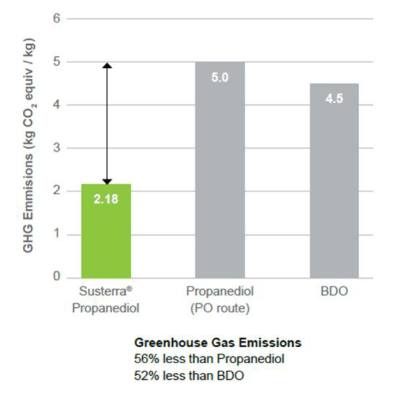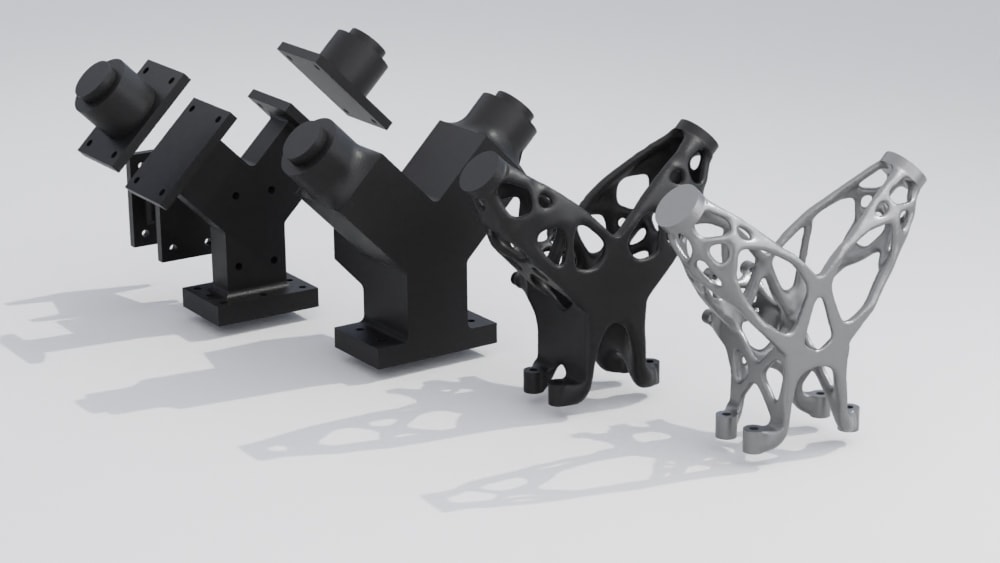Sustainable Manufacturing: Carbon’s Efforts to Lead the Way
Carbon has revolutionized the way our customers design, develop, and manufacture products using Carbon Digital Light Synthesis™ (Carbon DLS™) technology. At Carbon, we want to make sure we minimize our impact on the planet by making sustainability a key focus area. Carbon has identified four focus areas towards this effort:
- Hazardous waste reduction
- Bio-based raw materials
- Part dematerialization
- Recycling
We’ll briefly walk through our efforts in each of these key areas.
Hazardous Waste: The Industry’s Dirty Little Secret
Hazardous waste generation has been called the “dirty secret” of additive manufacturing, particularly for liquid resin-based processes like stereolithography (SLA) and digital light projection (DLP). In the course of routine printing, hazardous waste is generated in the form of solvents used for cleaning parts and residual resin. As Carbon began to ramp Carbon DLS to large-scale production, we realized we needed to solve this problem both for environmental reasons as well as to reduce part costs associated with waste generation and disposal. To accomplish this goal, we developed a completely solvent-free cleaning method called “spin- cleaning.”

This process uses centrifugal spinners (Figure 1) to drive off residual resin at high speeds, leaving behind a clean part without the use of solvents. Additionally, residual resin can be collected, mixed with fresh resin, and reused in subsequent prints. This process works for both single-cure as well as dual-cure resins and reduces part costs and waste generation.
In 2022 alone, Carbon’s spin-cleaning process has prevented the generation of an estimated 1,500–2,500 metric tons of hazardous solvent waste. This is roughly the size of an Olympic swimming pool. Additionally, over 150 metric tons of resin, which would have otherwise been disposed of as hazardous waste, were instead recovered and converted into parts. Spin-cleaning is a massive breakthrough in the creation of more sustainable additive manufacturing processes.
For parts that still require solvent cleaning, Carbon has implemented a distillation process for our own labs where isopropyl alcohol (IPA) can be distilled and reused. This significantly reduces hazardous waste generation. Over the course of a year, Carbon distilled approximately 6,000 liters of IPA that would have otherwise been disposed of as hazardous waste. We have also advised customers on setting up their own distillation units.
Finally, Carbon offers large-scale bulk packaging for resins used in high-volume production environments. This substantially reduces packaging waste compared to smaller volume containers. For example, a single tote containing 1 metric ton of resin is the same volume as 333 3-L containers. While not appropriate for all use cases, bulk packaging is another effective means of reducing hazardous waste.
Leveraging Renewable Resources: Bio-based Raw Materials
The vast majority of raw materials for 3D printing resin components are derived from petroleum, a nonrenewable resource. Petroleum-derived raw materials have a high carbon footprint owing to the laborious manufacturing process used to convert crude oil into complex chemical components useful in resin formulations. In the last few decades, a significant effort to transition to bio-derived raw materials has emerged. Bio-derived raw materials from sources such as plants or microbes are renewable and have a considerably lower carbon footprint when compared to petroleum-derived materials. Carbon has partnered with companies such as DuPont Tate & Lyle to use bio-derived precursors to polyurethane building blocks in our resin formulations. Production of these bio-derived materials generates 56% less greenhouse gas emissions and uses 42% less nonrenewable energy compared to their petroleum-derived counterparts. (Figure 2)

Carbon has two products that include bio-derived raw materials. The first is EPU 44, a tough, high energy return, high elongation, polyurethane elastomer used in several applications including the 4DFWD running shoe produced by adidas (Figure 3). EPU 44 contains 40% bio-derived components by weight. Notably, we did not sacrifice any material performance when transitioning to the bio-derived raw material.

Additionally, Carbon offers a high-impact strength rigid polyurethane material called RPU 130. RPU 130 contains 25% bio-derived components by weight and boasts an impressive balance of high impact strength (>30 J Gardner impact) and thermal stability (120oC HDT). This material is useful for producing products across a range of industries including automotive and consumer. Again, no decrease in performance was necessary to leverage the bio-derived raw materials.
Light-Weighting and Material Reduction with Innovative Geometries
An exciting benefit of additive manufacturing is the ability to generate geometries, such as lattices, that cannot be produced by traditional manufacturing processes like injection molding. Lattice structures have been used for decades to create large structures like bridges and building frames because they offer high strength while using the minimal amount of material needed. With the advent of additive manufacturing technologies like Carbon DLS, this same benefit can now be achieved for a wider variety of parts and materials. Using a combination of advanced software tools and high-performance materials, nearly any part can be converted to a lattice or other structure, which reduces material use while meeting the strength requirements of the application.
From a sustainability perspective, this has two important benefits: 1) parts produced this way use less overall material than a fully solid part produced by molding, and 2) light-weighting of parts is beneficial for industries like automotive and aerospace for which “every gram counts.” This can result in significant cost savings and reduced carbon emissions for a wide variety of vehicles via improved energy efficiency.
Recently developed software tools like Carbon’s Design Engine™ Pro and CogniCAD offer the ability for users to light-weight parts at the click of a button (see Figure 4). This powerful technology can radically improve the sustainability of manufactured parts in ways that were previously unimaginable.

Creating a Recycling Workflow
Carbon’s fleet of printers include cassettes that are recyclable. More than 95% of Carbon’s original cassettes are still in circulation.
Additionally, the Carbon Materials team has devoted considerable research and development into investigating recycling possibilities for printed parts. Owing to the unique nature of Carbon’s dual-cure materials, we, in partnership with adidas, have found that our EPU 41 and EPU 44 elastomers can be recycled through a melt-processing pathway. Printed material can be ground up, melted, and formed into a new part (Figure 5). The reprocessed elastomer retains 70–80% of its original mechanical properties, which is common for such mechanical recycling processes. This opens the door to a recycling workflow that would allow new elastomer components to be generated from the original printed parts. Much work remains, but we are excited about the possibilities this opens up.

Finally, we are also working on materials that can be “chemically recycled.” Chemical recycling is a relatively new process whereby polymers can be transformed back into their starting materials. Once purified, these recycled precursors can be re-polymerized into new material without sacrificing any resulting mechanical properties. Carbon has developed a chemical recycling process where we can recover key starting materials that are then purified and re-used in subsequent batches of resin. Though early, this work holds the promise of more sustainable products produced by the Carbon DLS platform.
Additive Manufacturing’s Responsibility to Create Sustainable Practices
Additive manufacturing is radically changing the way products are designed, validated, and manufactured. As the field grows, it is imperative that sustainable practices are built in from the beginning and are not an afterthought. As seen in the work here, Carbon is at the forefront of working to make additive manufacturing more sustainable. We are leveraging our deep expertise in hardware design, software development, and materials science to push the boundaries of what is possible. Whether you’re a customer, partner, or competitor, we invite you to join us in this effort towards a better future!
If you’d like to learn more about any of these topics, please contact us at info@carbon3d.com or, for existing customers, through your account manager.
